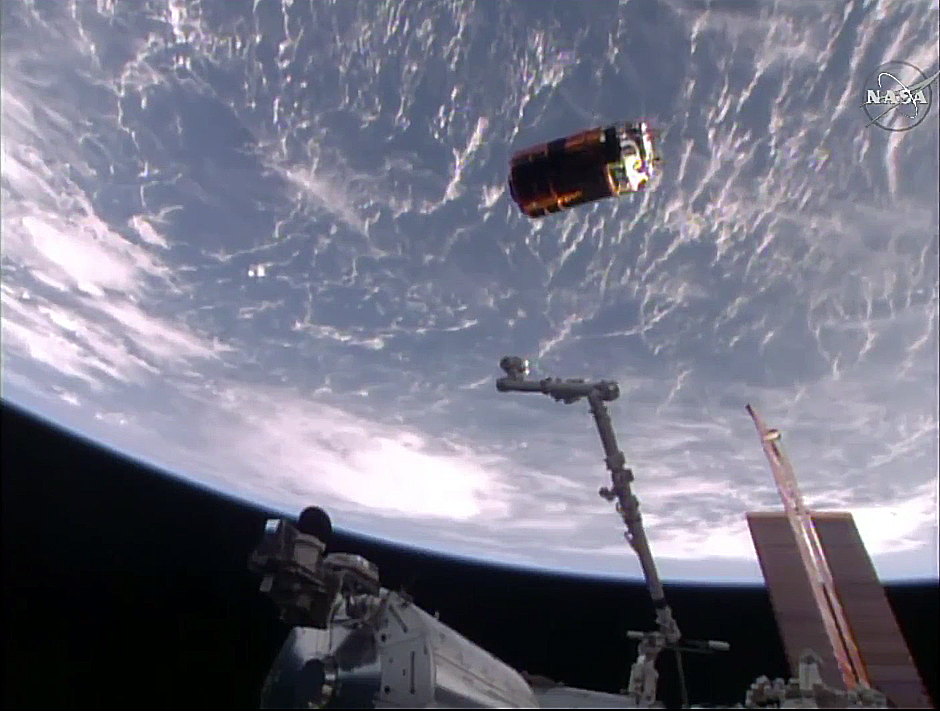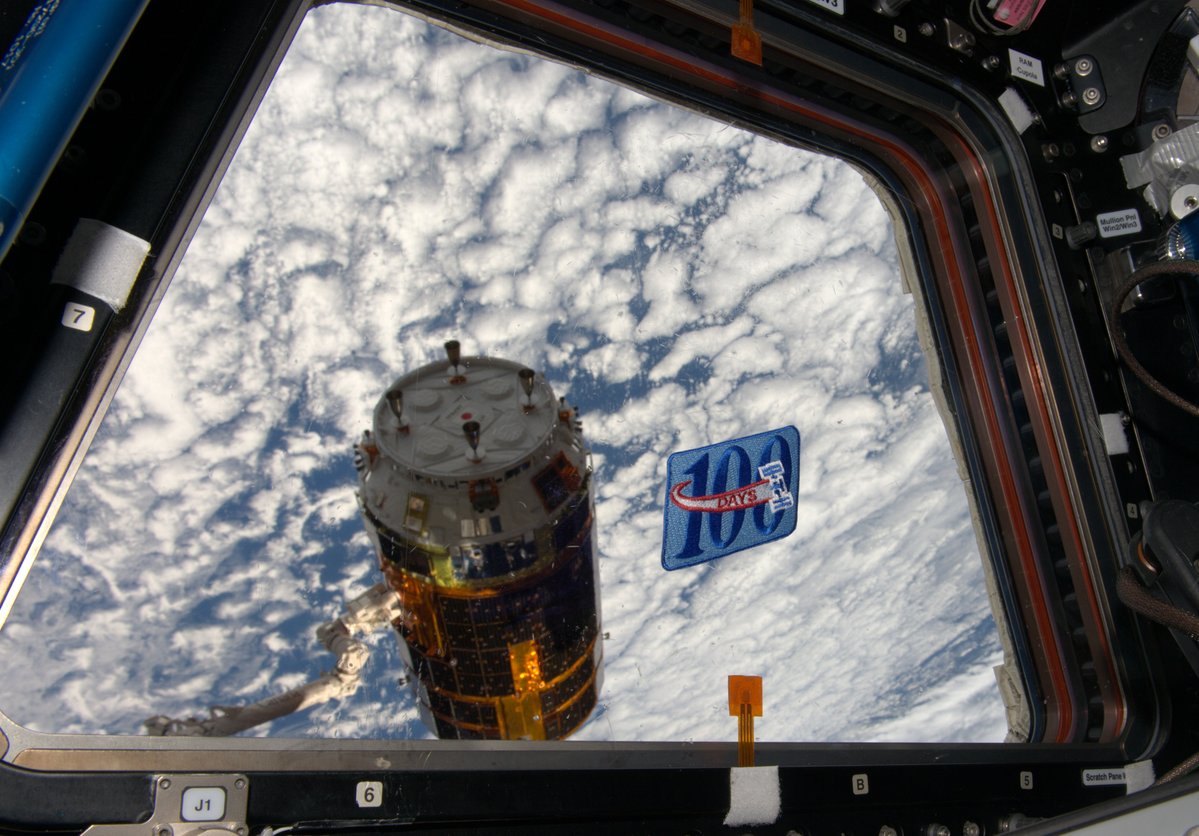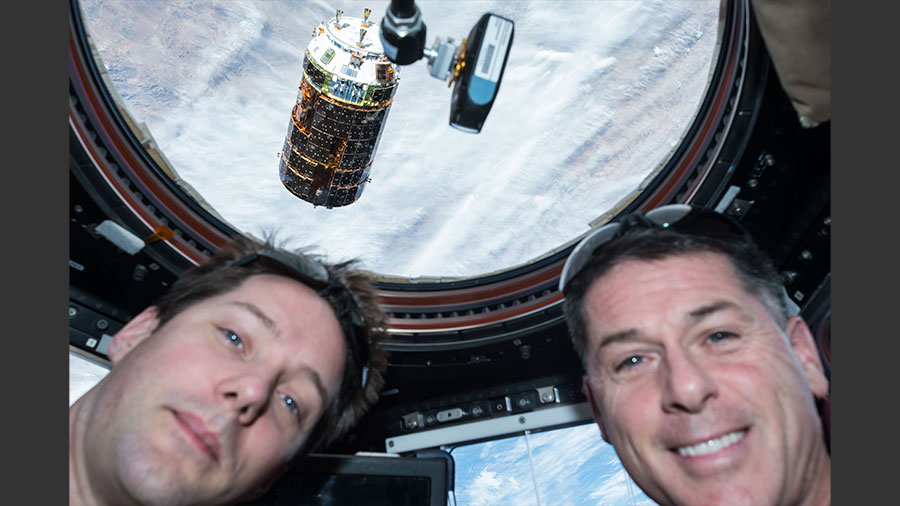Japanese Craft Leaves Space Station to Conduct Space-Junk Experiment

A Japanese cargo ship undocked from the International Space Station today (Jan. 27) and will spend the next week doing a science experiment in orbit before burning up in Earth's atmosphere on Super Bowl Sunday (Feb. 5).
HTV-6, also known as Kounotori 6, is Japan's sixth cargo resupply mission to the space station. It arrived at the orbiting lab in December with nearly 5 tons of supplies, including food, water, science gear, spare parts and Christmas gifts for the crewmembers. It also brought along new lithium-ion batteries for a major power upgrade that took two spacewalks and weeks of robotic work to complete.
After spending seven weeks docked to the space station's Harmony module, the uncrewed cargo ship was sent away to eventually burn up in Earth's atmosphere along with a few tons of garbage the crew stuffed inside. Six old nickel-hydrogen batteries were also on board for disposal. [Japan's Robotic Space Cargo Ship Fleet in Photos]

The cargo ship departed at 10:46 a.m. EST (1546 GMT). Though the undocking was running behind schedule by about 16 minutes, NASA reported that everything was "nominal," or functioning properly.
Commander Shane Kimbrough of NASA and flight engineer Thomas Pesquet of the European Space Agency manned the controls from inside the space station's Cupola observatory — a room with the world's largest space window and an incredible view of Earth. The Cupola serves as a control room for a 57.7-foot (17.6-meter) robotic arm named Canadarm2, which Kimbrough and Pesquet manually operated to send off HTV-6.

Before HTV-6 deorbits and burns up in the atmosphere, it will spend a week conducting Japan's Kounotori Integrated Tether Experiment (KITE), a new technology that could one day help to eliminate dangerous space junk from Earth's orbit.
HTV-6 will unleash a 700-meter-long (2,296 feet) electrodynamic tether designed to latch onto pieces of orbiting debris and drag them down to Earth's atmosphere to be incinerated. While performing this task, the spacecraft will maintain a safe distance from the space station by orbiting the Earth about 12 miles (19 km) below the space station and 23 miles (37 km) ahead of it.
Get the Space.com Newsletter
Breaking space news, the latest updates on rocket launches, skywatching events and more!
On Feb. 4, the spacecraft will perform a safe and controlled deorbit before meeting its fiery demise in the atmosphere over the Pacific Ocean.
Email Hanneke Weitering at hweitering@space.com or follow her @hannekescience. Follow us @Spacedotcom, Facebook and Google+. Original article on Space.com.
Join our Space Forums to keep talking space on the latest missions, night sky and more! And if you have a news tip, correction or comment, let us know at: community@space.com.

Hanneke Weitering is a multimedia journalist in the Pacific Northwest reporting on the future of aviation at FutureFlight.aero and Aviation International News and was previously the Editor for Spaceflight and Astronomy news here at Space.com. As an editor with over 10 years of experience in science journalism she has previously written for Scholastic Classroom Magazines, MedPage Today and The Joint Institute for Computational Sciences at Oak Ridge National Laboratory. After studying physics at the University of Tennessee in her hometown of Knoxville, she earned her graduate degree in Science, Health and Environmental Reporting (SHERP) from New York University. Hanneke joined the Space.com team in 2016 as a staff writer and producer, covering topics including spaceflight and astronomy. She currently lives in Seattle, home of the Space Needle, with her cat and two snakes. In her spare time, Hanneke enjoys exploring the Rocky Mountains, basking in nature and looking for dark skies to gaze at the cosmos.









